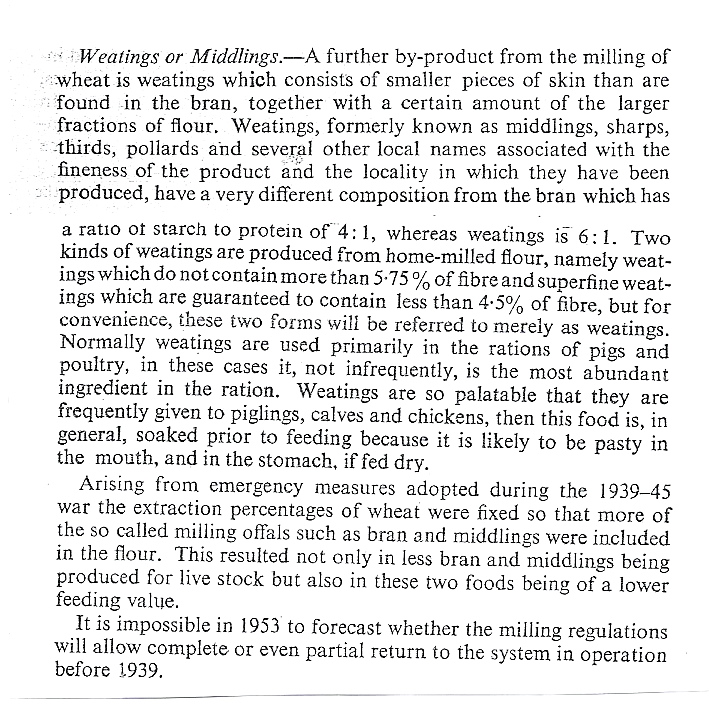In May 1940, Martin Coles Harman, the owner of Lundy, made the surprising decision to lease the island for a period of ten years to a Mr. Herbert A. Van Os. His reasons have never been fully understood, but the difficulties of reaching the island during the war, provisioning the island, and the shortage of staff may all have contributed to this decision. It is known that Mr. Felix William Gade, agent and administrator of Lundy from 1925 to 1971, was totally against this leasing arrangement. In his memoirs entitled “My Life on Lundy”, published in 1978, and in chapter 10, Mr. Gade tells us exactly what he thought of Mr. Van Os and his abilities as a farmer.
Van Os had a small farming business in Middlesex and persuaded Martin Coles Harman that he could run the farm on Lundy to a profit. He brought a couple of men with him, who turned out to have had no farming experience whatsoever, and a lady to run the hotel and shop. Mr. Gade and his wife Rene moved into Millcombe House, the home of the owners, with the remit of simply keeping a watchful eye on the farm activities.
In fact Gade still had to perform many of the farm tasks, such as sheep shearing, ploughing and repairing and maintaining of machinery, as Van Os and his men were quite incapable of performing these tasks. The sheep were uncared for and most lambs died, the crops were not harvested in time and rotted in the fields and the deer were shot in large numbers, including the last of the fallow deer. The shippons were not cleared of dung and the cows not milked on time. One of the only two work horses on the island was allowed to die of a chill. The whole farming structure of the island was virtually wrecked and left in ruins when Van Os finally departed.
Probably at Gade’s suggestion, Martin Coles Harman came down, alone, to Lundy for Christmas 1941 and after discussions with Van Os which were likely to have been very heated (although Gade in his memoirs does not specifically say so), in February 1942 Van Os and his employees departed Lundy.
The Gades soldiered on for the rest of the war, restoring and running the farm, keeping the island supplied and dealing with the few visitors that were able to get there. There was a small Royal Navy Contingent of men billeted at the Old Light and the Light House keepers to provide occasional volunteer work, plus one or two other workers that remained. The island had no ship of its own during the war and all ships and visitors to the island, including even the owners, had to obtain permits from Admiral H. G. Franklin, the commandant of the Appledore and estuary area, who handed them out grudgingly.
Documents with the signature of Herbert Van Os from the period he was on Lundy are very rare but a single item, a postcard, is in the collection of the writer of these notes. It is dated Nov. 1941, and indicates that at least some farming activity was carried on during that unfortunate time. Typically, no postage stamps were placed on the card, which bears postage due stamps for 4d.
Addressed to Messrs G. T. Andrews & Sons Ltd., Town Mills, Barnstaple, the text ran as follows:- “We have today shipped to you the undermentioned:-
46 lbs Locks.
7 lbs Fleece.
The above will be laying at Royal Navy Stores, The Quay, Appedore. Hope that you can collect when in district. Have you sent off poultry grain and have I coupons for a sack of middlings? (Signed) Herbert Van Os.”
This short text actually says quite a lot. It shows that sheep were being shorn, even though probably by Mr. Gade, and that the wool was being transferred and sold on the mainland. Interestingly the fleeces were being deposited in the Royal Naval Stores at Appledore, under the beady eye of Admiral Franklin no doubt. It is also worthy of note that in war time, farmers still needed ‘coupons’ to purchase some of their supplies, in the same way as ration books were issued to the ordinary citizens. And what are ‘Middlings’ ? *
This story of Herbert Van Os and Lundy during wartime is covered in much greater detail by Mr. Gade in his memoirs, as indeed he covers almost every moment of the last 53 years of his life that he spent on Lundy.
Roger Allen.
****
*
‘Middlings’.
29th April.
Dear Editor,
My wife and I thoroughly enjoyed reading the May edition of Bideford Buzz, particularly the articles on ‘War Time Savings’ and ‘Wartime Farming Problems’ on Lundy.
In the latter, Roger Allen queries, “What are Middlings?”
I remembered that they were a form of second quality wheat, but checked for a fuller definition in a post-war book of mine, entitled “The Principles and Practice of Feeding Farm Animals” (1st published – 1940). I attach the entry for Roger’s enlightenment (see below).
Many thanks for your efforts in producing your fine community newsletter.
Yours sincerely,
John Hobbs. (Buckland Brewer)
_________________________________________________




I’m researching Margaret Burfitt from Ilfracombe who joined the Women’s Land Army and was posted to Lundy Island in December 1939. She lived and worked with Mr and Mrs Morris on the Lundy Farm. The press called her “The Loneliest Land Girl in England” until another Land Girl, Violet Bicker joined her in February 1940. Having read Roger Allen’s piece on wartime Lundy, I’m curious as to what happened to them. Did they stay on with Mr Van Os or did their WLA service end? By December 1941 Margaret had joined the ATS and was a mechanic in the Motor Transport Section. I’d appreciate any information anyone has about the Land Girls of Lundy Island.